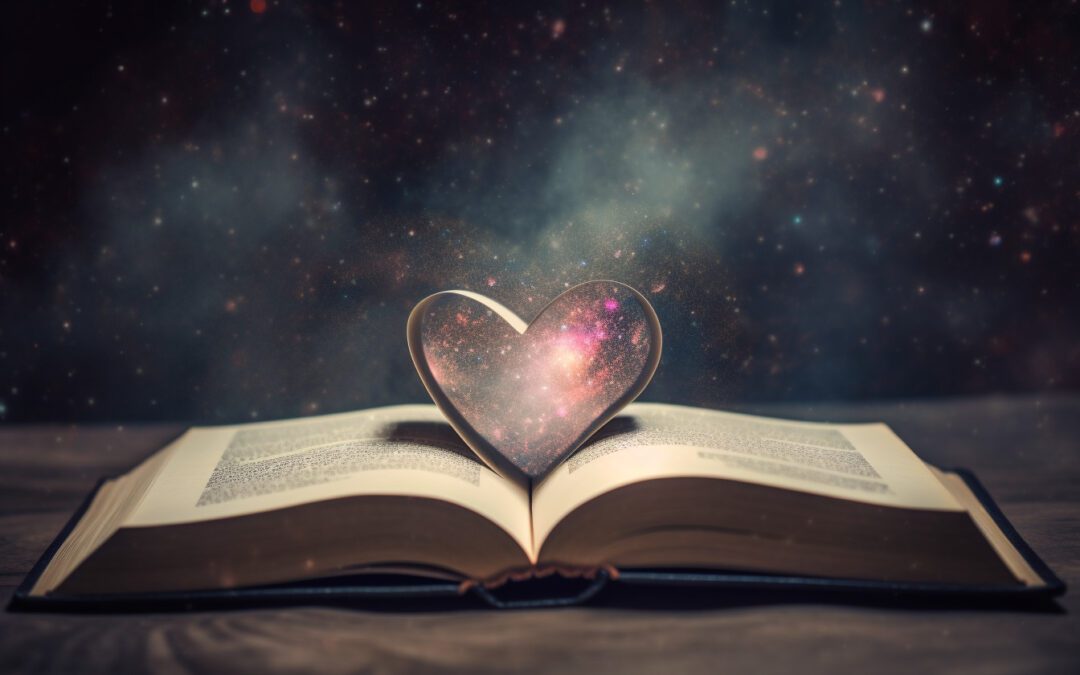Behold the resplendent universe in all its cosmic glory. It’s a celestial theatre, an astounding spectacle of incomprehensible vastness, painted with streaks of nebulous color and studded with diamonds of light. And yet, to those who dare to delve deeper, it reveals itself to be an embodiment of profound love, echoing the very sentiments that underpin the most passionate of romantic poetry.
Welcome to the grand narrative of cosmic love, an exploration into the nexus of the infinite and the intimate, of science and art, of Astrophysics and Romantic Poetry. As we journey through this infinite gallery of space and time, prepare to see an enthralling embodiment of love, written in the language of the stars.
The Concept of Love in Astrophysics
Our exploration begins in the heart of the cosmos, where celestial bodies whisper tales of love. Stars, for instance, are a captivating embodiment of commitment. They form from immense, billowing clouds of gas and dust, and against all odds, they bind together, generating heat and radiance, illuminating the cosmos with their relentless glow. It’s a story of unity, persistence, and devotion, closely mirroring our understanding of profound love.
Akin to love’s evolution, a star undergoes a majestic transformation over time. The passionate glow of its youth eventually matures into a steady, enduring radiance, much like the metamorphosis of infatuation into deep, abiding love. Even in their demise, stars leave a significant imprint on the universe. When a star dies in a supernova explosion, it scatters heavier elements across space, seeding future generations of stars and planets. This grand act of selfless giving resonates deeply with the very essence of love, which seeks to offer, to nurture, and to enrich.
Galaxies, too, serve as a poignant metaphor for cosmic love. Consisting of billions of stars, they embody unity and collective harmony. The Milky Way and Andromeda, two vast galaxies on a collision course, provide a stellar example. Over billions of years, their gravitational attraction will draw them together, merging into a single, more massive galaxy. It’s a dance of cosmic proportions, a dance of attraction and integration, echoing the fundamental dynamics of love.
Meanwhile, black holes, seemingly destructive and consuming, offer a contrasting perspective on love. They symbolize the powerful, sometimes overwhelming intensity of love that draws everything into its orbit, a vortex of emotions from which escape seems impossible. And yet, even in their insatiable hunger, they bring forth creation, spewing out jets of energy and matter, contributing to the cycle of cosmic life.
Astrophysics, thus, unfolds as a grand allegory of love. Its narrative—punctuated by birth, growth, transformation, and rebirth—speaks to the core of romantic love. It illustrates love’s propensity to create and transform, to unite and proliferate, to sacrifice and endure. As we navigate this cosmic narrative, the intersections with romantic poetry start to reveal themselves, intertwining the tangible with the abstract, the empirical with the emotional. Join us as we delve deeper into this convergence in the following section.
The Depiction of Space and Love in Romantic Poetry
Through the cosmic elements, poets deliver an intense exploration of love, one that transcends earthly limits. It is an exploration of the ceaseless longing, the persistent desire, and the often unattainable wish for a love that mirrors the eternal beauty of the cosmos. Such celestial imageries not only convey the magnitude of these emotions but also hint at their complex, multifaceted nature – an aspect of love that makes it as intriguing and enigmatic as the universe itself.
In essence, romantic poets leverage the endless expanse of space, its awe-inspiring phenomena, and the captivating allure of celestial bodies to magnify their expressions of love. This unique blend of space and love gives romantic poetry its distinctive quality, providing readers with an enriched understanding of both the microcosm of personal emotions and the macrocosm of universal truths.
John Keats’ celebrated work, ‘Bright Star’ encapsulates the exquisite paradox that lies at the heart of many love stories – the ephemeral quality of human life against the eternal beauty of the stars. Keats’ yearning for immortal love is likened to the star’s unwavering presence, reflecting the poet’s aspiration for an enduring connection that stretches beyond the constraints of time and mortality.
Similarly, Percy Bysshe Shelley in his ‘To the Moon‘ treats the celestial body not just as an object of admiration, but as a symbol of his affectionate longing. As the Moon traverses its monthly cycles, Shelley sees it as a poignant reflection of his fluctuating emotions, where its brightness mirrors his moments of joy and its darkness resonates with his melancholy.
The gravitational pull of galaxies, the perpetual glow of stars, and the boundless expanse of the cosmos have all found their way into the poet’s quill. William Wordsworth’s ‘Intimations of Immortality’ takes a cosmic perspective to conceive love as a force connecting the souls, akin to gravitational pull that binds celestial bodies together.
Emily Dickinson’s poems too shimmer with stellar imagery. In ‘The Moon is Distant from the Sea‘, Dickinson depicts the sea’s longing for the moon as an allegory for the universal yearning of love. Despite the distance, the sea never ceases to reach for the moon, an image as striking as it is poignant, encapsulating the inexorable pull of love, much like the moon governs the tides.
In Samuel Taylor Coleridge’s ‘The Rime of the Ancient Mariner’, space does more than add beauty; it becomes an embodiment of the protagonist’s emotional turmoil. The description of the night sky, with all its stars, highlights the sense of isolation and loneliness felt by the Mariner, emphasizing the agonizing absence of his beloved.
Danil Rudoy’s ‘The Eternal‘ artfully weaves together the strands of astrophysics and romantic love. It presents a beautiful paradox wherein the celestial and the intimate collide. The speaker’s lover stands in stark contrast to the mysterious vastness of space, like a radiant beacon against the backdrop of infinite darkness.
As if the canvas of the cosmos is a prism through which his affection is viewed, Rudoy uses space as an analogy to measure the intensity of his love. His beloved’s fear of being forgotten amidst the boundless universe is gently assuaged by the assurance of his constant love. His passion for the celestial doesn’t eclipse his fondness for her but rather underscores it. She becomes the tangible, emotional counterpoint to his abstract, intellectual curiosity.
Rudoy’s contemplation of the universe’s impermanence further emphasizes his devotion. Amid the infinite cosmos, ephemeral human life, and divine and infernal realms, his love for her persists, unwavering, as though it transcends the constraints of time and space.
The Intersection of Astrophysics and Romantic Poetry
As we venture into the crux of this intriguing dialogue between two worlds, we discover how astrophysics and romantic poetry, despite their surface-level dissimilarities, intersect to create a tantalizingly profound expanse of cosmic passion.
The celestial bodies in our cosmos are bound by a fundamental force: gravity. This invisible yet formidable power pulls heavenly bodies towards each other, echoing the relentless pull of attraction that characters often feel in romantic poetry. The constant gravitational tug, a mere scientific fact in astrophysics, becomes a metaphor for the relentless, irresistible pull of love that poets elegantly capture.
Take for instance, the manner in which a poet employs the image of a black hole. A force of nature so intense that light itself cannot escape, black holes in poetry become symbols of a love so powerful it consumes all, leaving no room for anything else. Meanwhile, in the realm of astrophysics, a black hole represents a point of infinite density, a singularity – hinting at love’s ability to condense an entire universe of emotion within our mortal hearts.
Next, let’s examine the stars. These nuclear furnaces are nature’s grandest luminaries, their perpetual glow a testament to endurance and constant presence. They are often employed in romantic poetry to symbolize the constancy of love, its luminous presence acting as a beacon in life’s darkest nights. Simultaneously, in astrophysics, stars represent a balance of forces – the outward push of nuclear fusion and the inward pull of gravity. This delicate equilibrium mirrors the intricate balance that lovers must maintain between freedom and commitment, self and other.
Galaxies, too, serve as remarkable symbols in the intersection of our two fields. As vast collections of stars, galaxies embody unity and community, mirroring the connections formed in love. The spirals of galaxies are reminiscent of the intricate dance of love – the ebb and flow of affection that keeps the love story compelling. Astrophysically, these galaxies spin due to the conservation of angular momentum, a force that can be paralleled with the idea that love, once set in motion, continues its dance through time and space.
One could not forget the phenomenon of the supernova, the spectacular explosion of a star, which leads to the creation of new elements. This dramatic celestial event has found its way into romantic poetry as a symbol of transformative love – a love so intense it changes the very fabric of being. Meanwhile, astrophysics views this phenomenon as an essential process for the creation of heavier elements – the literal building blocks of life.
These examples illuminate the beautiful, complex ways in which astrophysics and romantic poetry intersect. By employing celestial metaphors, poets imbue their exploration of love with a depth and grandeur that resonates with readers. Simultaneously, these metaphors provide a unique, artistic lens through which we can comprehend and appreciate the profound mysteries of our cosmos. They render the scientific palpable, the celestial intimate, and make of the vast universe a familiar dwelling for the human heart.
Cosmic Love: Conclusion
The exploration of astrophysics and romantic poetry reveals a profound interconnectedness between the domains of the scientific and the emotional. The boundless cosmos serves as a fitting metaphor for the infinite expressions of love. Poets, like Rudoy, effortlessly blend these domains, bringing a unique depth to the notion of romantic affection. This conjunction enriches our understanding of both fields, showcasing the breadth of human inquiry – from the scientific to the emotional, from the physical to the metaphysical.
Through this blend, we see an exciting reciprocity between two seemingly disparate subjects. The cosmos becomes a conduit for human emotion, and in turn, our personal narratives lend a touch of humanity to the scientific exploration of the universe. This relationship bears witness to the unending fascination we hold for the mysteries of the universe and the depths of the human heart. It inspires us to continue exploring this intersection in literature and beyond, constantly challenging and broadening our perspectives on life, love, and the universe.

